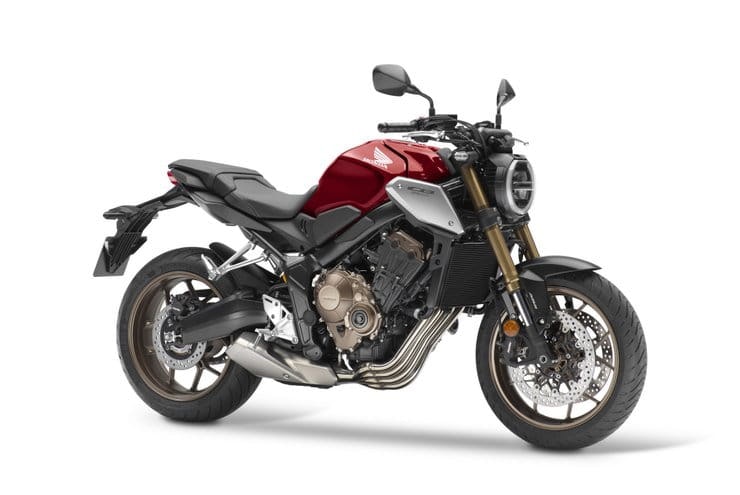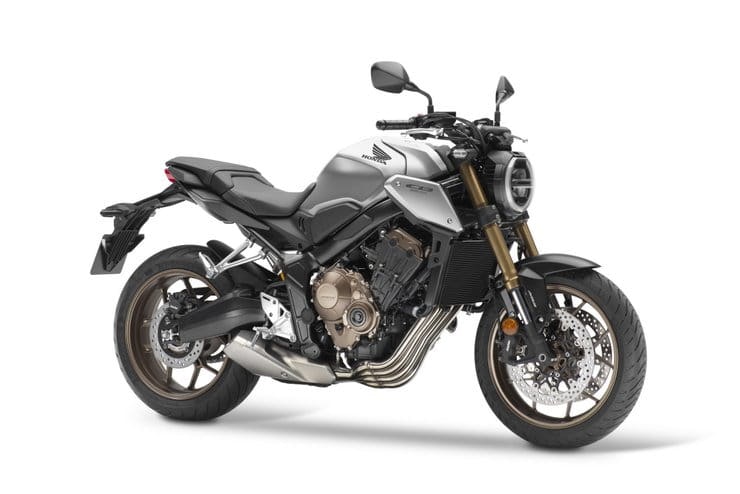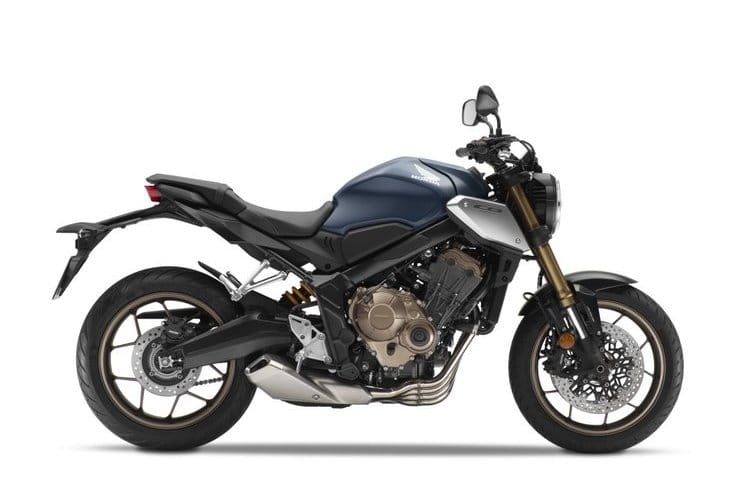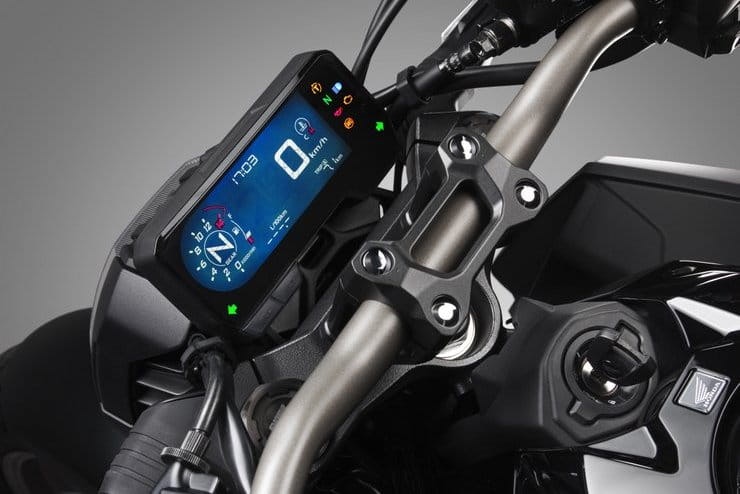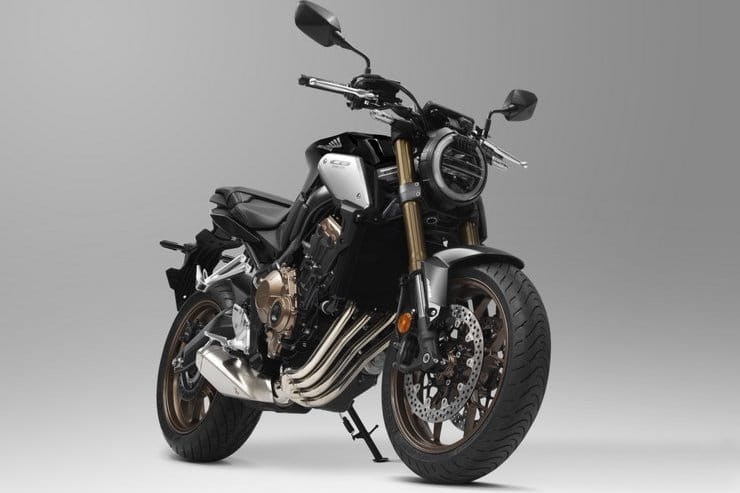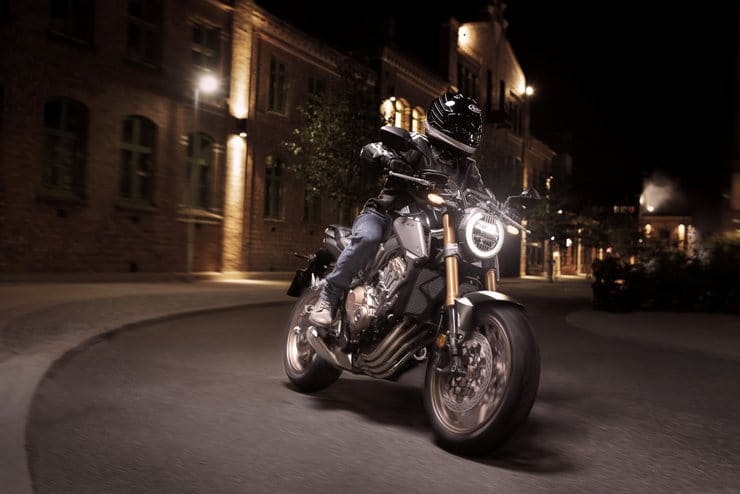Honda 2019: CB650R, CBR650R, CB500X, CBR500R, CB500F | EICMA show
By Ben Purvis
Motorcycle Journalist
06.11.2018
Introducing the five new Honda's for 2019
Join us at EICMA as the five new Honda's are unveiled. We get the low-down on all the highlights
Milan’s EICMA show is the biggest of the year and Honda has opted to use it for its main new model reveals, with the middleweight CB650 and CB500 ranges leading its charge for 2019.
2019 Honda CB650R
Honda was notably quiet at the Intermot show in Germany last month, but it did reveal its Neo Sports Cafe concept at the concurrent Paris Show. Now, just weeks later, that concept has become a production bike – the new CB650R.
The quick turnaround is no surprise; Honda did the same thing last year, revealing its first Neo Sports Cafe concept at October’s Tokyo show and the identical-looking CB1000R production bike at November’s EICMA event. And the 2019 CB650R basically takes the same styling theme as the CB1000R, CB300R and CB125R and applies them to a replacement for the old CB650F.
It’s a good look, adopting some classic shapes and proportions but without the Heartbeat-levels of 1960s-worship that full-on retro machines like the Triumph Bonneville aim for. The result is stylistically in the same ballpark as Husqvarna’s Vitpilen, with a stylised circular LED headlight and stubby tail, a tried-and tested engine on full display and 21st century brakes and suspension. Compared to the CB650F it replaces, it’s a hugely successful transformation.
Under the new styling, there’s a revised steel frame that helps cut 6kg from the weight, while the new 41mm USD Showa SFF forks and radial-mount Nissin calipers are a huge step forward from its predecessor’s budget components.
The four-cylinder, 649cc engine is basically from the CB650F, but power is up from 90hp to 93.3hp, peaking 1000rpm higher than before at 12,000rpm. That’s thanks to an increased compression ratio of 11.6:1, up from 11.4:1, revised pistons and a reinforced valve train to cope with the additional revs. While the exhaust looks the same as before, it has a larger-bore tail pipe to improve flow. Honda’s HSTC traction control system is standard.
With bars positioned 8mm lower and 13mm further forward, footpegs mounted 6mm higher and 3mm further back, it’s got a sportier riding position than the old CB650F, while the seat height is unchanged at 810mm. The chassis may be redesigned, but its 1450mm wheelbase and 25.5° rake are the same as before, so any improvement in handling will be down to the new suspension.
Honda’s options list includes a quickshifter, heated grips, a pillion seat cover, bellypan and aluminium side and intake covers, among other things.
Catch our 2019 Honda CB650R review here.
2019 Honda CB650R spec
2019 Honda CBR650R
With the naked CB650F becoming the more retro-styled but better-specified CB650R in 2019, its fully-faired sibling, the CBR650F, was also set for matching upgrades, becoming the CBR650R in the process.
With the CBR600RR now gone from Honda’s range in Europe, the CBR650R is now its leading middleweight sports bike. So by swapping that ‘F’ for an ‘R’ Honda has moved it fractionally further towards the sporty end of the spectrum, while hopefully not harming the everyday usability and affordable pricing that let the old CBR650F consistently outsell more extreme 600cc-class four-cylinder machines.
Mechanically, the bike is the same as the naked CB650R, with 93.3hp and 46.8lb-ft of torque – around 5% more than its predecessor thanks to a higher-revving engine with revised pistons, strengthened valve train and an increased exhaust bore. Its chassis is also straight from the CB650R, an updated steel frame with pressed swingarm pivot sections rather than cast ones, helping reduce its weight by 6kg compared to the CBR650F. Wheelbase and head angle are unaltered, but the use of Showa SFF upside-down forks with adjustable preload and rebound damping promises improved handling and ride.
The riding position is sportier than before. The bars are now clip-ons mounted below the top yoke, and they’re shifted 30mm forwards, too. As on the CB650R, the pegs are 3mm further back and 6mm higher than before, while the seat height is unaltered at 810mm.
The styling takes a leaf from the CBR1000RR Fireblade’s book, adding twin headlights and a shorter tail than before, while two ram air intakes replace the old CBR650F’s single, central one.
While not intended as a direct rival to track warriors like the Yamaha R6 and the newly revamped Kawasaki ZX-6R, the CBR650R means Honda isn’t without a sports bike in the middleweight class. The old steel-chassis CBR600F used to regularly outsell more aggressively-spec’d, aluminium-framed competitors, and with its more rounded appeal the CBR650R could be on course to repeat that trick.
Read our full Honda CBR650R review here.
2019 Honda CBR650R spec
2019 Honda CB500X
Honda’s main thrust for 2019 might be the four-cylinder CB650 range but the smaller parallel twin CB500 line-up is also revamped for next year.
We’ll start with the most fashionable of the range, the CB500X. In 2019 it’s facing tougher competition than ever, with a vast number of adventure-style middleweights on the market, from the bargain-basement Royal Enfield Himalayan to newcomers like Yamaha’s Tenere 700 and KTM’s 790 Adventure.
The Honda’s updates include a new look and longer-travel suspension to improve its off-road ability, while the engine is also tweaked for improved performance.
The engine changes aren’t reflected in peak power; it’s still 35kW (47hp) to meet A2 licence restrictions, but Honda says there’s 4% more power between 3000rpm and 7000rpm, with tweaks to the inlets, exhaust and the valve lift and timing. It’s bolted to an unchanged steel frame, but the whole bike is raised by 10mm compared to the old model, giving 180mm of ground clearance. The 41mm forks have 10mm more travel, now 150mm, and the rear increases from 118mm to 135mm thanks to a new shock. Seat height is increased from 810mm to 830mm, but the seat is slimmer to make it easier to reach the ground.
The wheels have also come in for a change, with the old bike’s 17in front replaced with a more off-road-ready 19in rim, while both ends have a new spoke design.
Style-wise, the bigger front wheel helps give a more adventure-style stance, while the bodywork is also new with a redesigned fairing and screen. The change isn’t just cosmetic – it allows the bars to turn more than before, increasing full lock by 3° to 38° from centre. New LCD instruments include gear position and a programmable shift light, while the screen stay doubles as a GPS mount.
Full 2019 Honda CB500X review available here.
2019 Honda CB500X spec
2019 Honda CBR500R
Just as Honda has made the CBR650R sportier than the CBR650F its replaces, the firm has also given the 2019 CBR500R a set of changes to boost its sporting credentials.
As a contender in the WorldSSP300 class, it makes sense for Honda to hone the CBR500R’s track-worthiness, and it’s done just that, tweaking the engine and riding position as well as the aerodynamics for next year.
The engine changes are the same as the rest of the 2019 CB500 range, with the same 47hp peak power as before but 4% more between 3000rpm and 7000rpm thanks to more valve lift and altered valve timing, while an assist-and-slipper clutch is also added.
On the styling front, the bike gets a new fairing, tank and seat, with clip-on bars now mounted below the top yoke for a sportier riding position. The rider leans 8 degrees further forwards than before, and the front fairing has been lowered to suit that change, improving aerodynamics.
The main chassis is the same as last year, but there’s a new rear shock with nine-stage preload adjustment and the swingarm is redesigned to include a new chain adjuster. Key geometry elements like the wheelbase and head angle are unchanged.
Like the rest of the CB500 range, there’s a new LCD instrument pack including a gear position indicator and adjustable shift light.
2019 Honda CBR500R spec
2019 Honda CB500F
Given the changes to the CB500X and CBR500R it’s no surprise that a similar set of updates has been applied to the naked CB500F for 2019.
Yes, the naked version of Honda’s budget middleweight range also gets the same tweaked 47hp engine, with 4% more power and torque between 3000rpm and 7000rpm courtesy of changes to the valve timing and lift. And as on the other machines in the range the frame is as before, but there’s an improved rear shock and a mildly altered swingarm design. The chassis geometry is unchanged, though.
While the CBR500R had got sportier and the CB500X is more off-roadable for 2019, the middle-of-the-road CB500F hasn’t been refined rather than repositioned. Tweaks include new, tapered handlebars, said to improve feel and leverage, and modified styling including a redesigned tank and new side panels.
On board, there’s the same new LCD instrument pack as its 2019 siblings gain, with gear indicator and shift light, which can be programmed to come on at any 250rpm increment between 5000rpm and the true red line of 8750rpm.
If you’re already a CB500F owner, the changes probably aren’t enough to persuade you to upgrade, but they make the middleweight package an even more appealing one for its core buyers; riders stepping up to their first A2 category machine.
2019 Honda CB500F spec
2019 Honda CBR1000RR Fireblade
There were rumours from Japan earlier this year that Honda was set to whip the covers off a completely new Fireblade as part of its 2019 range. But the reality is that the firm’s range-topping sports bike has received only minor tweaks.
Given that it had a major overhaul just two years ago, perhaps that’s not surprising, but the Blade still trails behind its most advanced rivals when it comes to out-and-out performance, and with a new BMW S1000RR for 2019, not to mention an updated Ninja ZX-10R, it’s not getting any easier to match up to them.
For 2019, Honda’s changes to the CBR1000RR include revisions to the traction control and ABS systems. On the braking side of things, the ABS is now set to intervene later during track riding, while the traction control has now been separated from the wheelie control system. That means you’ll be able to increase wheelie resistance while reducing traction control, or vice versa, rather than having the two settings synchronised.
Share on social media:
